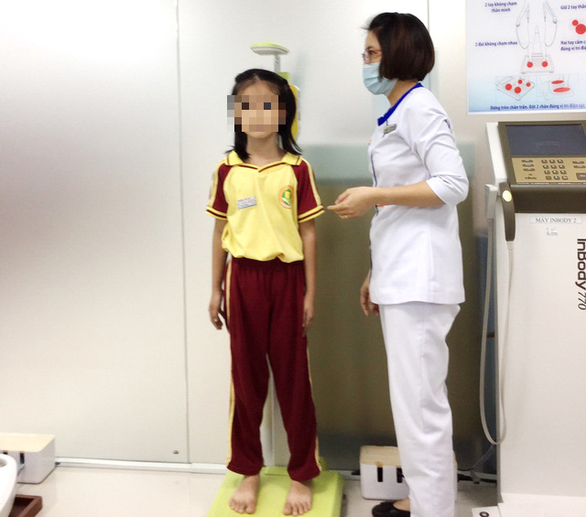The height of young Vietnamese has increased 3.7 centimeters in men and 1.4 centimeters in women in the past decade, while children’s obesity rate has more than doubled to 19 percent, according to the 2020 National Nutrition Survey results released on Thursday.
As the largest ever of its kind in Vietnam, the survey was conducted in 2019-20, covering 22,400 households in 25 provinces and cities in six ecological regions.
Significant height improvement
As shown in the survey’s results, the average height of 18-year-old Vietnamese men hit 168.1 centimeters in 2020, a 3.7-centimeter rise from 2010, while that of women at the same age surged 1.4 centimeters to 156.2 centimeters last year from 154.8 centimeters ten years earlier.
The height growth rates of the Vietnamese men and women in the past decade are far higher than those in the preceding decade.
From 2000 to 2010, the young male’s height increased 2.1 centimeters to more than 164 centimeters while that of young females only climbed one centimeter.
Overall, Vietnamese have been 1.1 centimeters taller per decade since 1975.
The average height of Vietnamese did not change in the 100 years that preceded 1975, with men 160 centimeters tall and women 150 centimeters, according to the survey.
More fruits, meat eaten
The survey found the average energy in the Vietnamese diet is 2,023 kcal per person per day, a slight increase compared to 1,925 kcal per person per day in 2010.
Vietnamese people also eat more fruits and vegetables compared to 10 years ago.
The per capita consumption of vegetables and fruits has ascended from 190.4 grams of vegetables per person per day in 2010 to 231 grams presently.
In 2010, each person ate 60.9 grams of ripe fruit per day on average while the current rate is 140.7 grams.
However, such consumption is only equal to 66-77 percent of the recommended nutritional requirement in adults.
Also shown in the survey’s results, Vietnamese people have eaten more meat over the past 10 years, with the average consumption of 84 grams per person jumping to 136.4 grams in 2020.
Urban citizens consume more meat than others, at 155.3 grams per capita a day.
|
|
| The Vietnamese diet contains much more meat than the recommended rate. Photo: Tuoi Tre |
Such meat consumption is very high compared to current recommendations, said Le Danh Tuyen, director of the National Nutrition Institute.
Every person should eat from 1.2 to 2.2 grams of red meat per kg of body weight per day, depending on their type of work, Tuyen said.
A 50-kg person doing office work should only consume 60 grams of red meat daily, the official added.
He also warned that there is a link between eating a lot of red meat and cancer and many other chronic diseases.
The survey also recorded the average consumption of rice has reduced over the past 10 years while that of fast food and soft drinks has gone up during the same period.
Child obesity
Overweight and obesity are more common in Vietnamese children, with the overall obesity rate sharply climbing to 19 percent in 2020 from 8.5 percent in 2010 among individuals aged 5-19.
The obesity rates in urban, rural, and mountainous areas were 26.8, 18.3 and 6.9 percent, respectively, last year.
Meanwhile, the survey found the overall proportion of infants exclusively breastfed in the first six months of life rising from 19.6 percent to more than 45 percent over the past ten years.
Such rates are higher in urban than other areas.
People have had a better understanding of food safety and followed regulations thereon, according to the survery.
Stunting
The survey’s results indicated that stunting accounts for 19.6 percent of children under five years old and 14.8 percent of the 5-19 year-old group.
This is the first time that the stunting rate among children under five has gone dipped 20 percent. It is on track to reach the global nutritional target.
The stunning rates of this age group are different between urban, rural, and mountainous areas, the survey said.
Like us on Facebook or follow us on Twitter to get the latest news about Vietnam!


















































